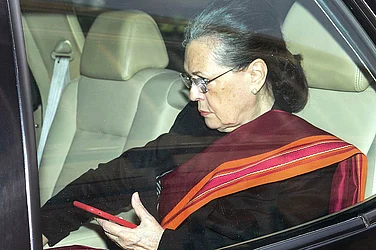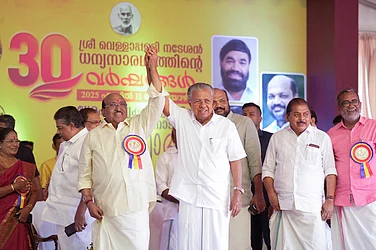For all those who wish to perfect the art of sacrificing real issues of development on the altar of number crunching, the Maharashtra governments population policy unveiled on March 8 this year is a fitting precedent.
The policy departs from the global consensus of the 1994 International Conference on Population and Development in Cairo - narrow concerns with demographics and numbers should give way to the ultimate goal of improving the quality of life.
The immediate controversy generated by the policy, however, has to do with its decision to deny the benefits of government schemes and subsidies to those who violate the two-child family norm.
In Maharashtra, those families which have a third child born after May 1, 2001 will have to forget about free primary education, rationed allotment of grain and kerosene and every other benefit offered by the government through reportedly 50 different schemes. In response to this resolution of the public health department, the other government departments are now expected to come up with their own disincentive programmes.
So, the food and civil supplies department has announced that grain and kerosene available under the public distribution system will only be given for up to two children per family. The animal husbandry department too has followed suit - its four main schemes supplying subsidised cattle and livestock to small and marginal farmers will be withheld from families which have more than two children born after May 1 next year. The education department, although non-committal about the schemes to be discontinued, admitted that free education, offered to all students below the poverty line up to the tenth standard, would not be made available to the third child born after May 1, 2001.
Expectedly, the people of Maharashtra have not taken these decisions lying down. Observes joint secretary of All India Democratic Womens Association (Maharashtra) Sonia Gill: "Such schemes are targeted at the poor. It hurts people who are already marginalised. They are the ones suffering from a shortage of drinking water and medical facilities, with the highest infant mortality and the lowest access to education."
The organisation stated: "The government of Maharashtra has explicitly proposed to punish the poor for their poverty."
Experts agree that such a measure, while penalising families already below the poverty line, will be particularly punishing for the woman and the girl-child. Their food entitlements will be the first to suffer when families access to food declines. With reduced rations, Maharashtras infant mortality rate, at a high of 44 deaths per 1,000 infants born, will rise further. Then again, when government support for primary education is withdrawn, it will be the girl-child, in all likelihood, who will stay at home.
"Maharashtras measure appears to be more about saving money by withdrawing facilities for the third child, than about the population issue," observes Professor C.R. Sadasivan, president of the Bombay University and College Teachers Union. Ravi Verma of the International Institute for Population Sciences argues that the governments disincentives are a clear departure from the widely-acclaimed reproductive and child health (rch) model of population planning. The rch approach stresses on womens rights and health and discourages the coercive target-oriented method of population planning.
It ought to be borne in mind that while Maharashtra, with a total fertility rate of 2.5, is lagging behind Tamil Nadus 2.2 and Keralas 1.96, it is way ahead of Madhya Pradesh at 3.5 or Uttar Pradesh at 3.9. Besides, Keralas success story owes nothing to disincentives. It was achieved by providing health services in rural areas, empowering women and making them the centre of the population programme.
There are, however, some, like iips Sumati Kulkarni, who claim that critics of the states population policy are looking at the disincentives in isolation. Says she: "The governments policy statement also talks of improving the quality of services. A combination of incentives and disincentives may not be so bad, it all depends on how they are implemented."
But critics reply that positive service improvements are yet to be implemented after 40 years of population planning. They believe that improving services "for the people is about making harder choices". "The results," according to them, "will take years to show, by which time these people will not be CM or ministers anymore. So they want quick results, to show their foreign masters, the World Bank and the imf, that they are really doing something."


























